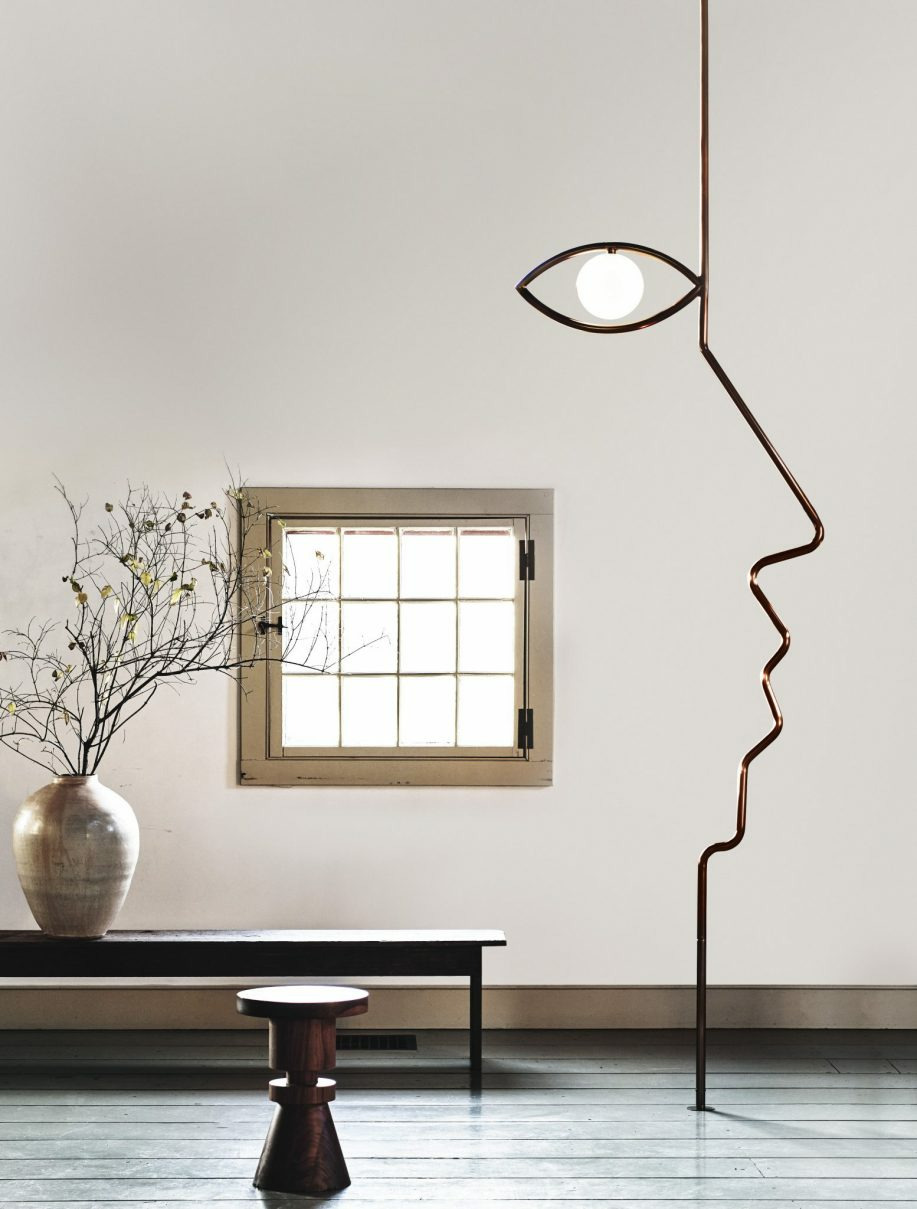
The shapely Body Sconce is one of Anna Karlin’s signature styles.
One of the most beloved aspects of Anna Karlin’s Lower East Side studio is the wall of shelving packed with vessels and objects of all kinds. Squat, bulbous, long, graphic, and organic in form, they’re all items that have ben made in the studio and are now displayed as a kind of visual prompt for the New York-based creative, who originally hails from London.
“Those bits and bobs are important to my process,” says Karlin. “Seeing them centers me and gets me in the zone. And it reminds me of all the trial and error involved in making. I might work on something, and there it sits for a while. Then I bring it back out. I would also describe it as almost a tool kit in terms of allowing me to study how something has melted or slanted or behaved as a material.”
Karlin, known for a style that spans between the pleasingly amorphic (like her Body Sconce) and whimsically defined lines (like the cheeky Face and Findings lights), herself crosses between crafting wearable pieces, lighting, furniture and interior design with a deftness that speaks to the thoughtful way in which she has grown her self-taught practice. Derived from an innate inquisitiveness and sensitivity to balance, Karlin’s oeuvre exudes refinement without preciousness, and character that endures.
After visiting Karlin’s buzzing studio last year, our team wanted to get to know Anna better, and here we ask her about the evolution of her practice, why she keeps coming back to the body as inspiration, and of course, magical spaces.

The studio’s Findings Light draws together multiple silhouettes working in harmony.
How are the various design disciplines you work in connected?
Everything is about storytelling. If you can communicate an idea, a concept, or a feeling through an inanimate object, I don't see what difference it makes what material it’s made from, or strictly what discipline that object falls into. And I see everything as a usable sculpture. So that, for me, is a kind of umbrella that I work under.
What’s your first memory of seeing a beautifully designed space or object?
One memory I have is of seeing a Claes Oldenburg exhibition when I was eight. He'd done a piece called Bedroom Ensemble, and I just thought it was deeply fabulous. It was meant to be a tacky and ironic commentary, but I didn’t get any of that. I just saw this animal-print covered “motel room”. So, I went home and decided to decorate. I went to the market and got a yard of fake fur and covered my whole tiny room in fake cow print. I even nicked the kettle from the kitchen and drew cow print all over that; I made myself a tea set so that it was complementary to the vibe of the room. I think it was a sign of things to come [laughs].

Anna Karlin’s Face Light (on display at Hollace Cluny) is one of the studio’s most eye-catching pieces.
Let’s talk about the evolution of your work and refinement of your aesthetic.
I’m self-taught, so I missed out on that development-of-design-language-at-art-school-moment. I’ve evolved as things have gone on, through having years of private practice and launching different things. I have found my sculptural language and my forms, and I'm really in the swing of it now. I also think I've looked more and more inwards.
Design is an external practice, but there’s a much more internal conversation that happens within me now – it comes with confidence, and with the time you’ve taken to develop a practice.
How do you invigorate your creativity when you come up against blocks?
There’s no shortage of ideas! What I come up against is finding those moments of calm – time to step back. That's something I would like to increase. But in terms of creative block, I think it's a luck thing that I'm quite disciplined with my work. I don't need a special room, for example. I just need to be left alone. I can be on the subway; I could be anywhere, as long as I have a sketchbook and a pen.

Why do you keep coming back to the body as a source of inspiration?
In some ways, being a mother is totally irrelevant to my work, and in other ways, it's completely central. It’s kind of paradoxical. When I was pregnant, subconsciously, everything I was sculpting really had a feeling of being held, evoking themes of “mother”, “baby”, “body”. It can sound trite, but it’s fundamental to who we are.
What would your dream project be?
I’d like to make a sculpture garden. If someone gave me the beautiful bones of a house, and I could create a magical land with it, both internally and externally, I’d be very happy.

